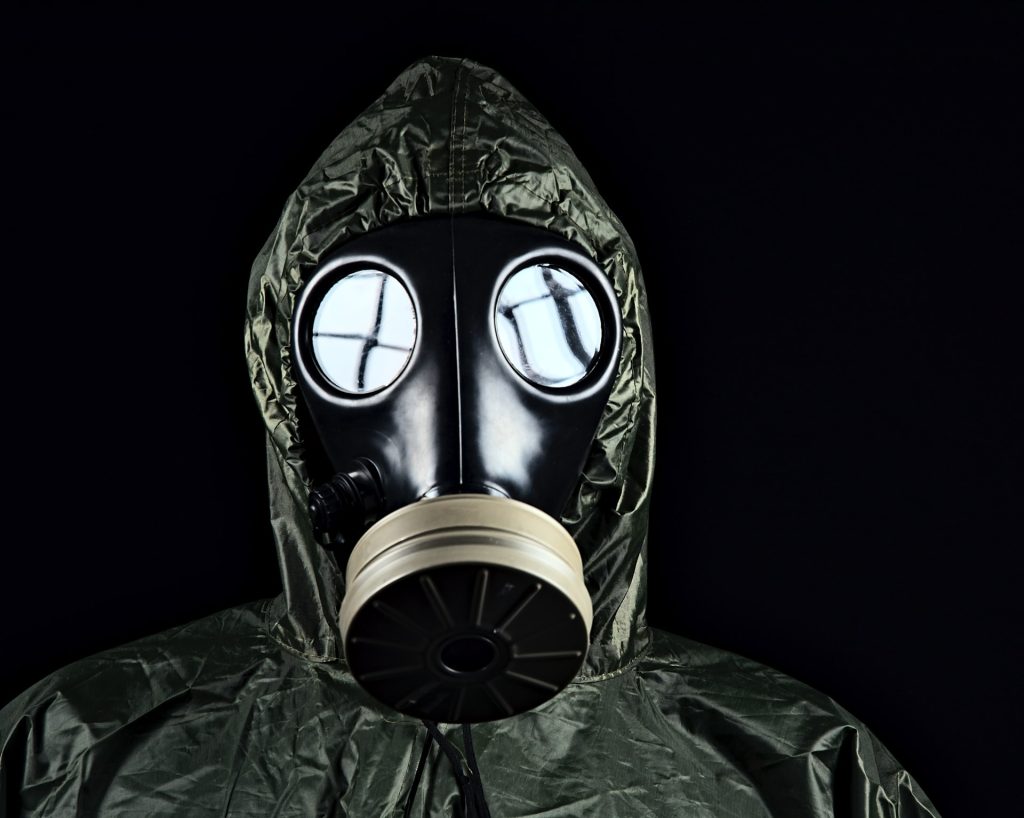
Writing for MedPage Today, two experts examine the possibility of chemical weapon use in Ukraine. Gavin Harris, MD assistant professor of infectious diseases and critical care, and Joel Zivot, MD, an associate professor of anaesthesiology/critical care, both of Emory University School of Medicine, explained the consequences of such an attack, noting that Russia has used such weapons in the past.
Though it’s uncertain whether Russia would launch a chemical attack, A/Profs Harris and Zivot wrote: “one thing is clear: in a large-scale chemical attack within the current Russian-Ukrainian conflict, the prospect of any meaningful healthcare response is bleak.”
Chemical agents fall under a number of classifications, which include blistering/vesicants such as mustard gas, blood agents such as hydrogen cyanide, choking/pulmonary agents such as chlorine gas, incapacitating agents such as opioids, and nerve agents such as sarin or the Russian-made Novichok. Development of modern chemical weapon traces back to the 1930s with the development of various nerve agents: organophosphorus cholinesterase inhibitors, each with particular potency.
Russia has recently complained to the UN Security Council that Ukraine and the US were cooperating to produce chemical and biological weapons for use in the war. The US government has responded that Russia is laying this claim to prepare for its own use of such weapons in Ukraine.
The preparation of chemical and biological agents can be done in secret, and easily introduced into the air, water, or food supply.
Invisible and odourless, nerve agents include sarin, soman, tabun, and the American-produced VX. The V agents were at one time considered to be the most toxic agents ever produced and are ten times more toxic than sarin. VX, tonnes of which was produced by the US government, can kill a person rapidly after they have been exposed to an infinitesimal amount.
Exposure to such nerve agents can cause a “constellation of symptoms,” according to the authors. “Nerve agents block the action of acetylcholinesterase, and this leads to accumulation of the neurotransmitter acetylcholine,” they wrote. “High levels of acetylcholine in the synaptic cleft causes overstimulation of cholinergic receptors. Symptoms related to excess accumulation of acetylcholine are divided into three groups: muscarinic, nicotinic, and central. Overstimulation of muscarinic cholinergic receptors causes pupil constriction, glandular hypersecretion, urination, defecation, sweating, and vomiting. Nicotinic symptoms are weakness and ultimately paralysis. Central nervous system poisoning will manifest as irritability, delirium, fatigue, lethargy, seizures, coma, and death by respiratory depression.”
Chemical weapons would have a devastating impact on already strained healthcare systems, A/Profs Harris and Zivot concluded. “Such weapons can create a complex mass casualty event where the treating personnel and the healthcare facilities may themselves be within the zone of conflict,” they wrote. “Chemical and biologic attacks require intense and complex treatment, and in both types of attacks, treating personnel may themselves be at risk of becoming exposed and therefore decontamination may be required before the initiation of any supportive treatments. Emergency and medical providers would also need to have access to proper respiratory protection and hazardous material/chemically resistant suits, and in a widespread attack, in an ever-deteriorating war zone like Ukraine, such treatment capacity would be highly limited.”
The authors note that such an attack would not be the first for Russia, which has shown a willingness to use chemical agents on more than one occasion.
During a hostage crisis in 2002, where Chechen rebels took over a Moscow theatre and took 700 hostages, Russian authorities used a gas to incapacitate the rebels – as well as the hostages. The gas may have been a mixture of remifentanil/halothane or an aerosolised form of carfentanil, a synthetic opioid that is approximately 10 000 times more potent than morphine. Overdoses from carfentanil from substance abuse have been seen in recent years. In many cases of opioid overdose, death from respiratory failure is a consequence. After the raid, at least 33 Chechens and 129 hostages died, mostly from gas exposure and inadequate medical care. Russian authorities refused to release information on the gas used, hindering emergency response.
Russia has also apparently used Novichok, which may be up to eight times as potent as VX, in recent high-profile attempts to kill opponents of the Russian government. The most recent use of Novichok was an attempted assassination of Alexei Navalny, a prominent Russian dissident. Though whether Novichok was the agent, Navalny’s treatment was for nerve agent exposure, featuring large doses of atropine. Though he survived, his treatment was an intensive, organised effort. A large attack using Novichok or other chemical agent in Ukraine promises to be almost entirely lethal to civilians, military and first responders.
Source: MedPage Today

